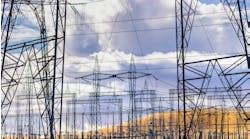A network of sensors has begun providing what may be the first collection of utility customer readings of one critical measure of power quality reaching U.S. homes.
Some 1-million plug-in devices provided to homeowners by Whisker Labs are now programmed to monitor and measure total harmonic distortion (THD). THD is a gauge of uneven or “noisy” power, which at elevated and sustained levels can damage utility infrastructure and devices and equipment used by power customers.
THD is a growing concern for utilities. An aging and increasingly overmatched grid faces demands that could spin THD into a more serious and chronic problem. More renewable energy, distributed power, and non-linear power demands may be contributing to an increase in the prevalence, degree, and risks of the condition.
But to what extent is THD a problem? The hope is this network of sensors will serve as an early warning system for electrical faults that pose risks to life and property.
“There has never been any sensor network that has documented THD at local scales,” says CEO Bob Marshall, Whisker Labs.
Tuned to detect THD readings known to be problematic, the sensors collect, and log flagged data. The goal is to make homeowners aware of problematic levels of THD and the potential consequences, knowledge they can share with their electrical utility service provider. The collected data can also be used to create maps of likely THD hotspots. This mapping data could be highly valuable to electric utilities looking to understand their service-area THD profile and formulate plans for addressing it.
“Elevated THD levels are insidious and cause increasing, long-term damage to all appliances and devices that use power in the home,” Marshall says. “And THD damages expensive grid equipment required to operate a safe and resilient grid.
Data collection alone, of course, won’t solve the THD problem that could worsen over time. But this type of sensor network offers a first step in giving electric utilities and other parties interested in electrical grid performance valuable insight into emerging power quality issues.
“An Electric Power Research Institute study has documented that poor power quality costs U.S. businesses $250 billion every year,” says Marshall. “THD is a very sensitive measure that is impacted by many problems on the grid and can be considered a ‘canary in the coalmine’ in terms of grid stresses being apparent in grid measurements very early.”




